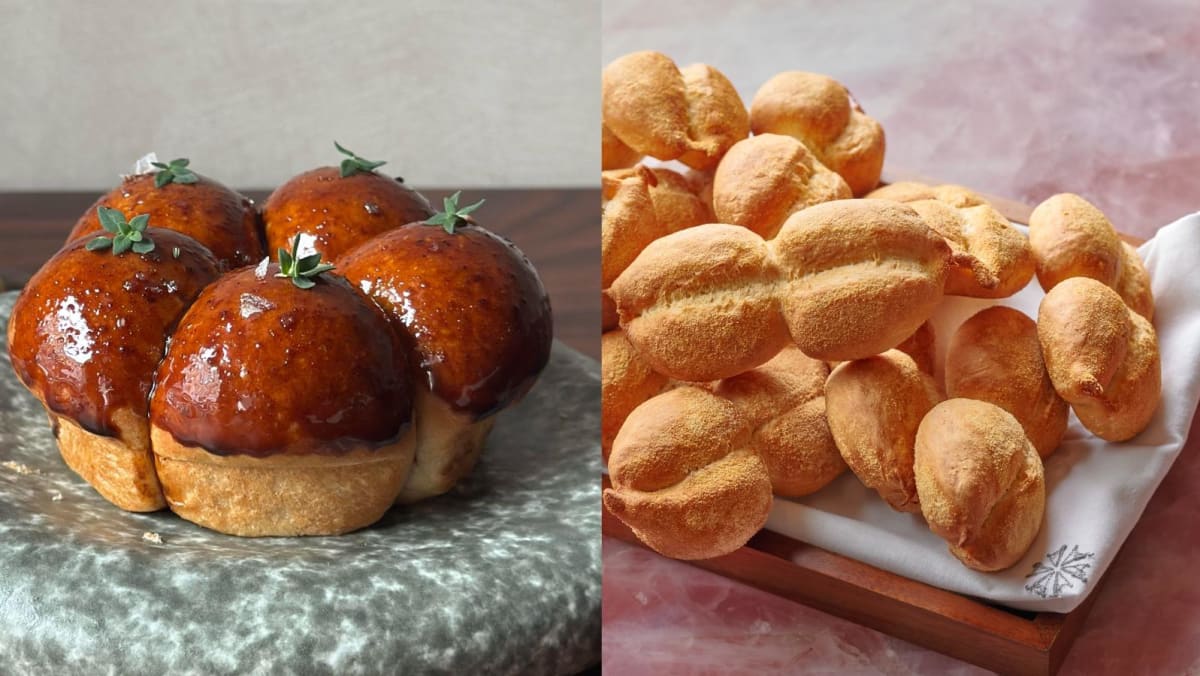Lastly, the Bocado de Dama, meaning “lady’s bite”, is a type of layered bread from colonial times. “We flavour ours with nori, which is not traditional, but gives it an umami note which I love. We also use the beef fat from our picana to make the bread, which gives it a really nice savoury richness.”
Bread “is seen as a small but delicious pleasure, and when people find out everything is made fresh in-house, and grounded in our traditions, they are often surprised,” said the pastry chef who co-helms the restaurant with husband Francisco Araya.
“Many households in Chile still make their own bread, using techniques passed down through generations – kneading by hand, shaping the dough, and baking in wood-fired ovens. The traditional methods and care give the bread its unique texture and taste.”
Over at Boronas, the star item is the Pan de la Casa (S$8) or “homemade bread” in Spanish, paired with smoked butter.
Arevalo began serving this rye bread with fermented mushroom and maple glaze, bacon fat and a sprinkle of thyme and salt at his previous restaurant, Preludio, and, during the pandemic, received many orders for it. Since then, “I thought opening a place for the bread would be a good idea,” he said.
Sharing diners’ enthusiastic feedback about the bread, he said, “I love how everyone finds something familiar in it. Some Asian people think it has oyster sauce; Australians tell me it must be Vegemite; Colombians also compare it with treats we have there. I love how it is new yet familiar”.

